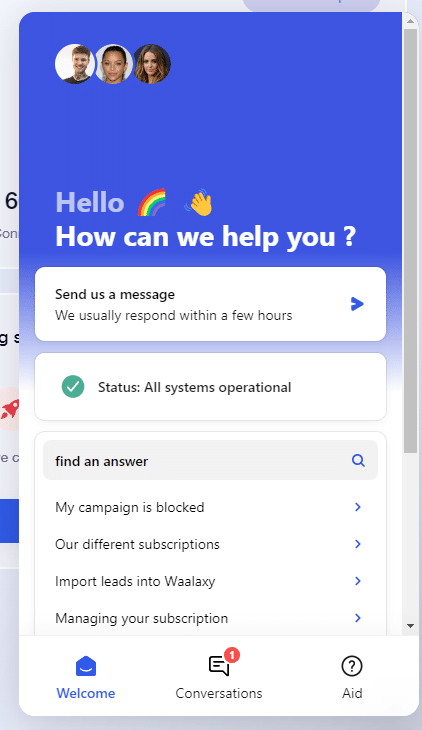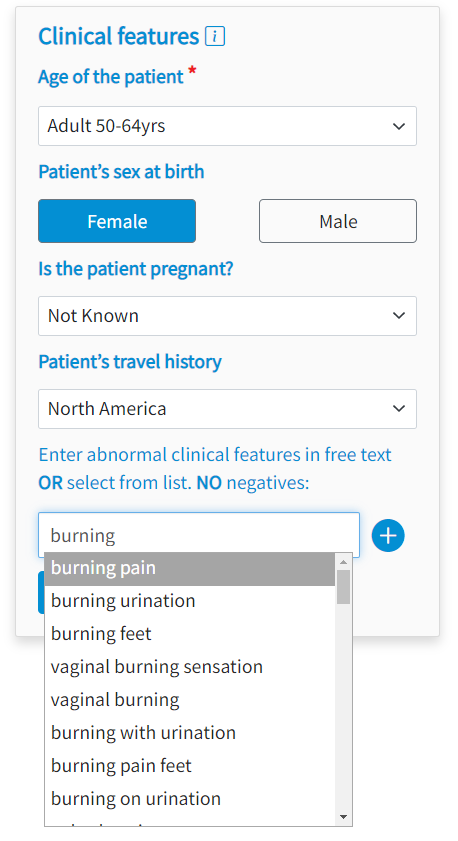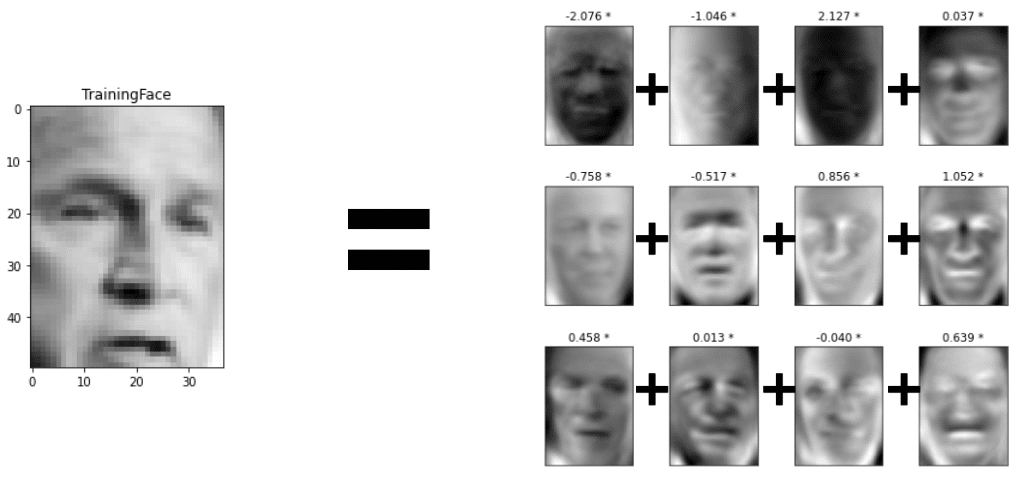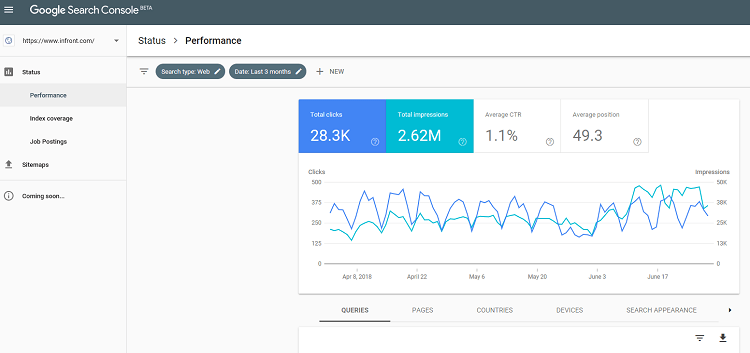What is Artificial Intelligence (AI)? It is undoubtedly one of the most incredible technologies of our era, capable of fundamentally transforming the way we live, work, and interact with the world around us.🌍
What is certain is that there will be a world before and a world after, just as there was a world before the internet and a new way of living after its invention. 🤯
We take the time to define AI applications in this video!
Researchers have worked hard to create algorithms and machine learning systems that can process large amounts of data, understand natural language, and make complex decisions autonomously. It’s pretty crazy, and I’ll explain why…
In this article, you will discover all types of AI and how they work.
What is Artificial Intelligence (A.I.)?
🤖 Artificial intelligence (deep AI) is a field of computer science that aims to create computer systems that can replicate human functions, such as:
- Perception,
- Reasoning,
- Learning,
- Understanding,
- Interaction.
🧐 The benefits of AI applications are many and varied.
It can be used to improve people’s quality of life by enabling better decision-making in areas such as:
- Medicine,
- Agriculture,
- Environment
- Safety and security.
🚀 It can also help businesses be more efficient by automating sales processes and providing accurate and timely analysis.
In addition, it can help solve complex problems like:
- Face recognition,
- Content creation,
- Task automation,
- Fraud detection.
🤔 However, we all know A.I. also raises concerns about its impact on society. Like any major novelty, it worries.
One of the main concerns is the loss of jobs, as some tasks once done by human workers can now be automated.
In addition, there are concerns about the use of AI in situations of surveillance, control, and manipulation. Therefore, it is important to ensure that the tool is used responsibly and ethically.
We talk about the different types of generative AI in business, in the next chapter! 😉
What is Artificial Intelligence? AI Meaning and types
You probably will have a hard time identifying what is artificial intelligence and in which category they fit and well there are about 8 main categories of AI. Some can be hybrid and therefore fall into two categories. 🤯
Weak AI (Chat AI)
This general category is also known as the “expert system”. 🤖
It is capable of solving specific problems in a specific domain but lacks the ability to learn beyond that domain.
For example, “chatbot” belongs to the category of AI called “Natural Language Processing” (NLP), which focuses on the interaction between computers and human language.

Chatbots use NLP algorithms to understand user requests and generate appropriate responses. It can only go so far, i.e. if it doesn’t understand the question, the chatbot offers the alternative “talk to a human”.
💡 Here are some of its features:
- Analysis of the user’s question to determine the topic of the conversation.
- Identification of the user’s keywords and intentions.
- Automatic response to the user based on their question.
- Ability to direct the user to additional resources if needed.
Chatbots are considered weak because they are limited and answer specific questions in a given context, and cannot understand the conversation as a whole or adapt to more complex situations.
Symbolic AI
This type of AI is established on the manipulation of abstract symbols and is often used in logical reasoning tasks for business. 🤖🔬
An example of symbolic AI is DXplain, an expert system developed by Harvard Medical School to help doctors diagnose complex diseases. In the same genre, there is Isabel Healthcare, a web-based medical diagnostic expert system that uses logic rules and a knowledge database to help diagnose rare and complex diseases.

They both use symbolic knowledge to solve medical diagnostic problems.
The system uses logical rules to diagnose bacterial infections based on symptoms and medical test results, using medical knowledge represented as logical rules.
💡 Some examples of tasks machines can perform are:
- 🥼 Analyzing patient symptoms and medical history.
- 💉 Use of logic rules to identify possible causes of symptoms.
- 🩻 Evaluation of medical test results to refine the diagnosis.
Photo AI (Perception AI)
Perception-based AI categories are capable of perceiving information from sensory data (images or sounds). 🤖👀
An example of a task for this category is image perception for facial recognition or object detection 🖼️ in videos.
Facial recognition-based AI uses algorithms to identify 👀, analyze, and compare human facial features in images or videos.
The operation of facial expressions AI is established on several general steps:
- 👩 Face detection.
- 👩🦲 Extraction features.
- 👱♀️👩 Feature comparison.

The name of the first facial recognition AI was “Eigenface.” It was developed in 1991 by researchers at MIT (Massachusetts Institute of Technology) to automatically recognize human faces from digital images.
Now there are new super powerful science, made easy AIs:
Simulation AI
This AI machines use simulations to solve complex problems. 🤖🎮
It is often used for planning and decision-making in virtual environments.
A common simulation AI is the flight simulator ✈️, which is used to train pilots for various flight scenarios in a variety of conditions, ranging from emergency situations to severe weather 🍃. There are also simulations from generative AIs for training drivers, doctors, and other professionals.
A few brands offer flight simulators of this type; X-Plane, Microsoft Flight Simulator, Prepar3D, and FlightGear. 🛫
The images, by the way, are breathtaking.
Knowledge-based AI
These AIs models use expert knowledge to solve specific problems. 💬
They might look like weak AI, but in reality, there is a nuance.
Let’s use the Chatbot example again 🤖; A chatbot is typically designed to handle simple, repetitive human interactions using pre-made rules and scripts, rather than drawing on a larger, complex knowledge base.
Knowledge AIs, therefore, have access to a much more elaborate database.🌏
Here’s a more concrete example > Cyc is an AI system established on a knowledge base containing data about the world and logical rules for reasoning about that information.
AI in machine learning
While knowledge-based AI uses pre-existing knowledge to solve specific problems, machine learning AI uses algorithms to learn from data and improve its performance over time, and thus, continues to evolve on its own. 🧠
ChatGPT is considered one of the best examples of machine learning AI because of its design established on the transform language model, which has led to a significant improvement in the quality of text generation.
💡 Basically, the tool can answer any humans questions, has uncommon knowledge, and continues to develop its techniques every time a user asks it questions.

AI based on web data
It is used for web search and analysis of large amounts of data. 🤖🕸️
It is often used in applications such as online product research or monitoring public opinion on social media network.
For example, Google Search, which uses machine learning to understand user queries and provide relevant search results. 👍

If you’re looking for another example, there’s Facebook News Feed, a filtering algorithm that uses AI to determine which posts should be displayed in each user’s news feed, established on their interests and activity on the site.
AI that enables task optimization
This type of AI program is used to find the best possible solutions to a given problem using optimization algorithms. 🤖🚀
It is often used in applications such as delivery route planning or transportation networks optimization, and in some cases on prospecting tools or management CRM.
Of course, all the AIs mentioned above are there to optimize tasks, save time and make your life easier.
For example, the technology of recommendation systems used by streaming platforms like Netflix and Spotify to suggest relevant content based on the user’s preferences, are also optimization AI. 😜
Types of artificial intelligence: Summary
| AI type | Function | Examples of brands |
| Symbolic | Uses knowledge bases for problem-solving. | DXplain. |
| Rule-based. | Uses rules for decision-making and task automation. | Drools. |
| Image recognition | Identifies and classifies objects in images. | Google Cloud Vision, Amazon Rekognition, Microsoft Azure Computer Vision. |
| Speech perception | Transcribes and analyzes human speech. | Google Speech-to-Text, Amazon Transcribe, IBM Watson Speech to Text. |
| Natural Language Processing | Understands and generates human language. | Google BERT, OpenAI GPT-3. |
| Simulation | Models complex situations for forecasts and environments. | AnyLogic, X-Plane, Microsoft Flight Simulator. |
| By machine learning | Learn models from data and feedback. | Google TensorFlow, OpenAI GPT-3. |
| Weak | Performs specific tasks without reasoning or understanding. | Siri, Alexa, Google Assistant, chatbot. |
| Knowledge-based | Uses very large knowledge bases for problem-solving. (usually the internet). | Cyc. |
Artificial Intelligence are also hybrids
Some AIs are in several categories at once!
For example, ChatGPT is indeed an AI based on machine learning techniques, which specifically uses transform neural networks to generate text.
Also, Google Assistant is a hybrid because it combines machine learning, knowledge AI and conversational AI (natural language processing) to provide a personal assistant experience to the user.
Conclusion: “What is Artificial Intelligence?”
🤝 In conclusion, artificial intelligence is revolutionizing the world, whether we like it or not, the system is already in place and can greatly help us if we learn to use it well.
Rapid advances in this field have led to unprecedented increases in productivity, efficiency and innovation, marketing, and other industries. From medicine to finance to manufacturing to services, AI is transforming the way we work and interact.
By investing in this area, companies can gain a competitive advantage, improve efficiency and profitability, and deliver a more personalized and engaging customer experience. We’re going to have to live with our world and make it a strength. 💪
FAQ: What is Artificial Intelligence?
What does Artificial Intelligence do?
AI is used in many fields, such as voice and facial recognition, machine translation, autonomous driving, consumer behavior prediction, analytics, fraud detection process, product recommendation, object perception, production planning, quality monitoring, etc.
How is AI used in everyday life?
You can ask Siri where to find restaurants or gas stations around you, you can ask Alexa to create a list of groceries for you to shop, you can also ask GPT-3 to write and article or create a cover letter for you and Midjourney to draw a beautiful garden for you.
To resume, you have a thousand possibilities to ask for help.
What can AI do that humans Cannot?
Is a very simple technology, a lot of things! Artificial intelligence has more knowledge than human beings. They have a huge data base of information, and they can reformulate to an infinite number of times. They can answer your questions and help you with tasks on a 24/7 basics.
What is the best Artificial Intelligence?
There is no single answer to this question because it depends on the field of application of AI. For example, in the field of speech recognition, Google’s AI is considered the best, while in the field of image perception, Facebook’s AI is very good…
However, the most used, intelligent and popular is GPT-3 from Open AI.
Who invented Artificial Intelligence?
AI as a research field appeared in the 1950s, with the work of researchers John McCarthy, Marvin Minsky, Claude Shannon and Nathaniel Rochester of Dartmouth College
Since then, AI technologies has seen major advances thanks to developments including mathematics, computer science, neuroscience, and cognitive psychology, as well as the rise of machine learning and big data.
Now you know more about the future of AI tools:
- All types of IA model,
- What is artificial intelligence,
- How do they work. 😉










